One of the most appealing aspects of snowshoeing is its simplicity: it requires relatively minimal specialized gear compared to other popular winter sports like cross-country, resort, and backcountry skiing. That said, having the right gear —like a set of poles—can make snowshoeing more enjoyable, help you cover more ground, and increase your safety.
If you’re not using poles while snowshoeing, here are some reasons to try them on your next adventure.

Poles have several benefits, including providing better balance while snowshoeing steep ascents on the west face of Mount Shasta. Photo: Tim Peck
Some of the links in this article may contain affiliate links. When you purchase using these links, part of the proceeds go to Snowshoe Mag. Additionally, as Amazon Associates, we earn from qualifying purchases. Please see our disclosure for more details.
1. Better Balance
Uneven terrain, steep ascents/descents, unseen obstacles, and variable snow conditions can make staying on your feet while snowshoeing an adventure. Poles provide two additional points of contact with the ground, adding stability and making it easier to keep your body balanced while snowshoeing.
Read More: Exercises To Improve Balance: One Foot at a Time
2. Get On Your Feet Easier
If you do happen to take a topple while snowshoeing, poles make it much easier to get back on your feet. They are particularly useful in deep snow, as they help bridge the gap between the top of the snowpack and the ground.
Read More: Snowshoeing Techniques for the Beginner
3. Move Faster
Poles help snowshoers establish a consistent rhythm, propel themselves forward, and stay in better balance, equating to more efficient and faster travel. A small study—albeit on a boot pack, not snowshoeing—found that using trekking poles on steep grades made the activity feel easier and led to more efficient travel.
Read More: How a Difficult Snowshoe Hike Makes You More Resilient
4. Reduce Joint and Muscle Stress
While snowshoeing is already a low-impact activity, using poles further reduces the impact snowshoeing has on your legs, knees, ankles, and feet by distributing some of the load to your upper body. This benefit is particularly valuable considering the extra stress put on your lower body by the weight of heavy winter packs, snowshoes, and bulky winter boots.
Read More: Reap the Health Benefits of Snowshoeing
5. Reduce Muscle Soreness
Less stress on muscles and joints can mean fewer sore muscles, especially following a big excursion. For example, a study of hikers found that those who used poles had significantly less muscle soreness, a reduced loss of strength, and a faster recovery than those who didn’t use poles. Recovering faster can make a big difference in getting the most out of too-short storm cycles and winters.
Read More: Optimal Recovery: Four Basic Components

Poles can help reduce joint and muscle stress and soreness. Here an author uses poles while snowshoeing below the tree line section of the Franconia Ridge Trail in Hampshire’s White Mountains. Photo: Tim Peck
6. Improve Circulation
Using poles while snowshoeing keeps your hands moving and blood flowing to them. This benefit not only helps keep swollen fingers at bay and keeps hands and fingers feeling warm but also helps you avoid cold-related injuries like frostbite.
Read More: Winter Injury Treatment and First Aid
7. Better Workout
Those who use snowshoeing to stay in shape over the winter will love to learn that because of the demands trekking poles put on the upper body, using them when snowshoeing burns more calories. While there’s no snowshoe-specific study, a study of nordic walkers—at its most basic, walking with poles—found that they burned more than 20% more calories than walkers without poles.
Read More: Snowshoeing for Improved Fitness with Nordic Walking Poles
8. Increase Safety
Poles keep you safer while snowshoeing. They are useful for everything from testing ice thickness on a water crossing and searching for hidden obstacles to gauging snow depth. In the event of an accident, you can use poles as a pair of impromptu crutches or make a splint with them.
Read More: Safety First: Snowshoeing Hazards and How To Avoid Them
9. Bolster Your Defenses
Poles provide defense against all types of threats encountered while snowshoeing. For example, use poles to clear annoying trail obstructions like thorns and blowdowns or to fend off an aggressive off-leash dog.
Read More: What To Bring When Snowshoeing: Top Accessories for the Day Hiker
10. Overnight Aid
Snowshoers heading out overnight will find that poles can be incorporated into various winter shelters, such as tarp/trench or pyramid-style shelter systems. Those camping above treeline or in other areas exposed to the elements will find that poles are also effective anchors for securing tents.
Read More: Winter Camping Checklist: What To Bring on Your Trip
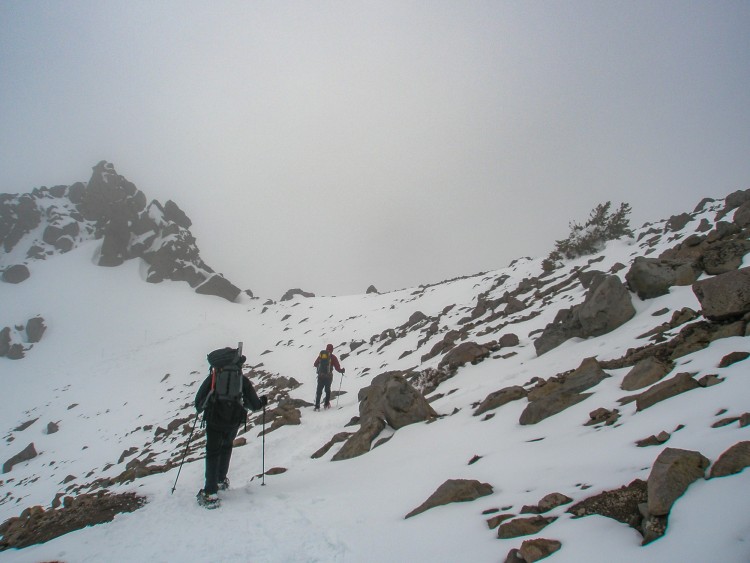
Poles can provide an upper body workout, bolster your defenses on the trail or provide overnight aid. Here, the authors snowshoe toward the summit of Lassen Peak. Photo: Tim Peck
Additional Tips for Snowshoeing with Poles
You can take a few simple steps to ensure you’re getting the most out of your poles. First and foremost, it’s vital that poles used for snowshoeing must be equipped with snow baskets. Snow baskets are larger than standard baskets and work similarly to snowshoes—they increase the surface area of the basket, spread the weight of the pole over a larger area, and keep the pole from sinking too deeply into the snow.
Collapsible poles also offer an advantage over fixed-length poles. Collapsible poles allow you to adjust the pole in response to the terrain in which you’re snowshoeing. For example, you can shorten the poles when ascending a steep hill to adjust for the decreased distance between your body and the ground. Conversely, you can extend the poles while going downhill to ensure the pole reaches the ground without putting your body out of balance and in an awkward position. If you’re traversing a long section of uneven terrain, you can adjust the poles to different heights to keep you in balance.
Make sure to deploy the poles at opportune times. Key situations include:
- Deep snow
- Long trips
- Carrying a heavy backpack
- Slick/slippery terrain
- Technical or challenging trails
- Moving up and down hills or mountains
Using poles in these situations will help you move faster, more efficiently, and in better balance while covering more terrain.
Read Next: Tips for Using and Choosing Your Pole: Two Poles or One?

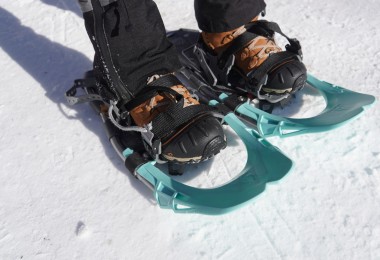
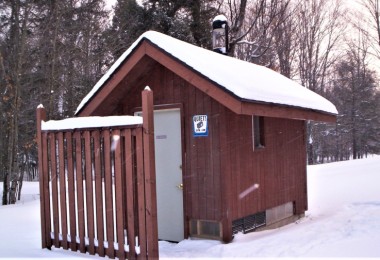
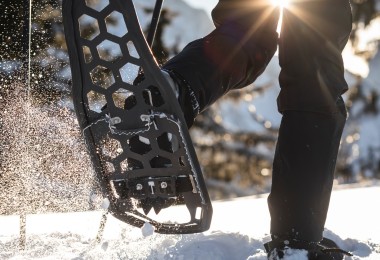
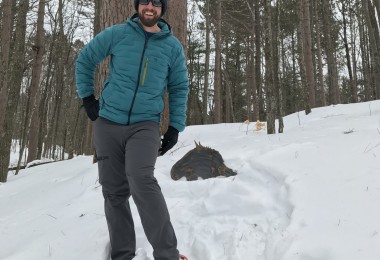

Leave a Comment